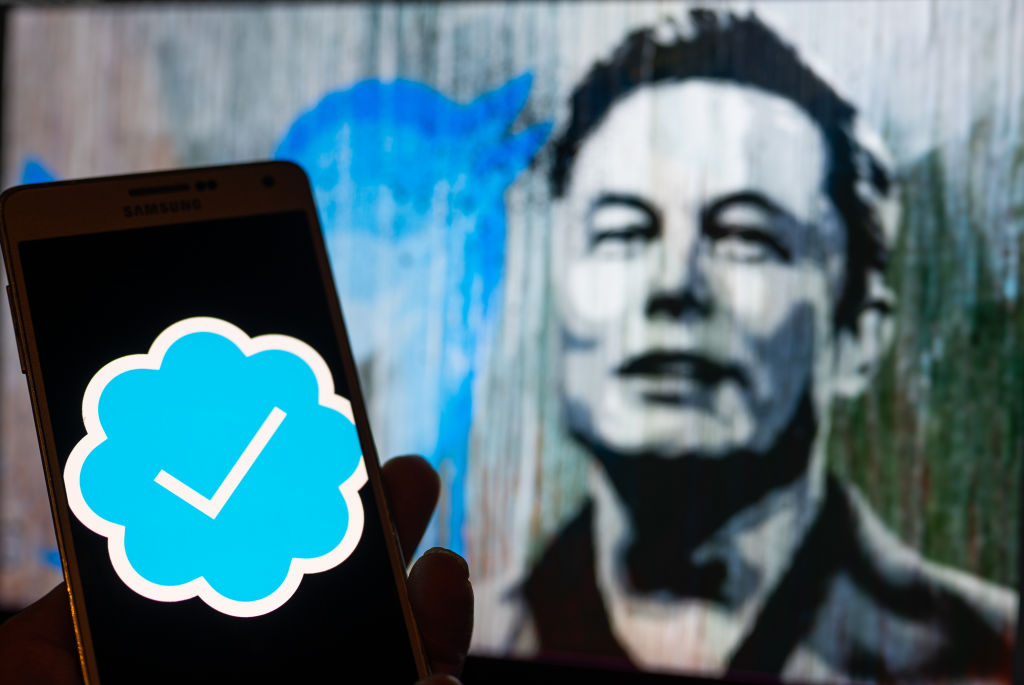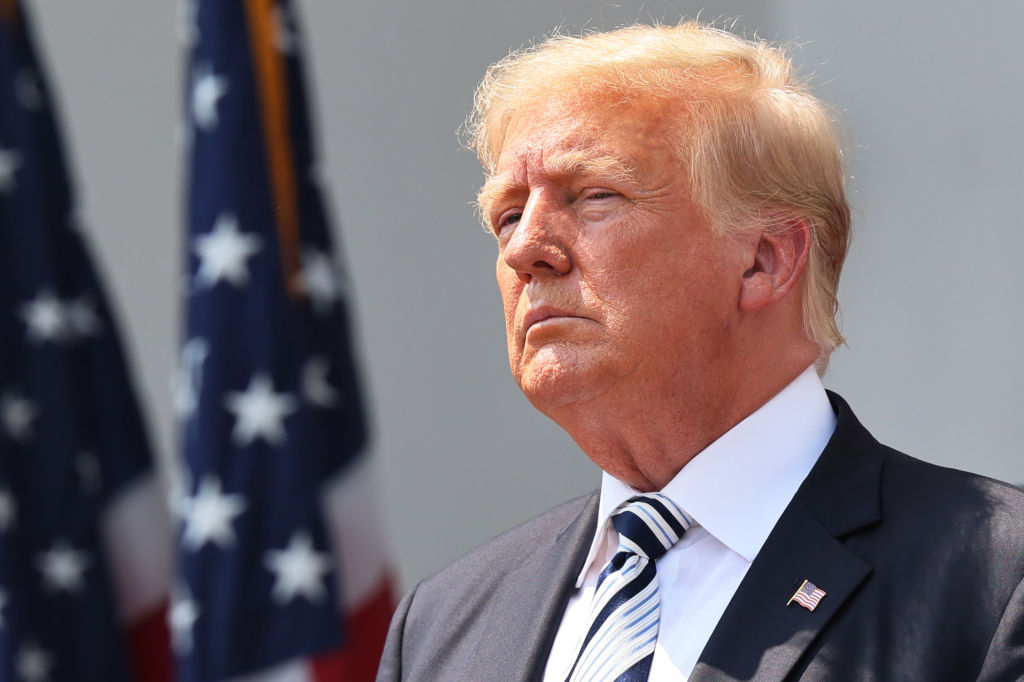Editor’s note: While everyone waits for the so-called Fauci Files, the public can comb through all 16 installments of the Twitter Files, showcasing everything from the White House pressuring the social media platform to officials colluding with law enforcement agencies. All the latest developments can be found here.
Twitter Files 16: A Media Experiment
The 16th installment of the Twitter Files revealed Sen. Angus King (I-ME) releasing a list of more than 300 Twitter accounts that he and his campaign thought engaged in “suspicious” activity, such as tweeting about “Rand Paul visit excitement” and “mentions immigration.” Independent journalist Matt Taibbi likened it to former President Richard Nixon’s enemies list if he were sniffing glue. But one curious name on the senator’s list was financial publication ZeroHedge, which was described as a “bot.”
Twitter Files 15: Supplemental
Matt Taibbi published the 15th edition of the Twitter Files, which was a supplemental installment featuring additional ban requests from Rep. Adam Schiff (D-CA) and his House staff. One request involved a photoshopped image of President Joe Biden sticking out his tongue. The Democratic congressman and his team were upset that the image went viral after former President Donald Trump retweeted the picture. Twitter refused to remove the photo, with Trust and Safety Chief Yoel Roth saying it had “humorous intent” and “any reasonable observer” would determine it was doctored.

Adam Schiff (Photo by Drew Angerer/Getty Images)
This was not the only complaint from Schiff’s office. It was upset by “QAnon related activity.” Although Twitter staff did not ban any of these accounts, it “deamplified them,” which also perturbed the congressman’s office since “it might make it harder for law enforcement to track the offending tweeters.”
The Twitter Files 14: Russiagate Edition
In an extensive 40-tweet thread that highlighted “the fake tale of Russian bots” supported by Democrats, Matt Taibbi went into great detail about how eminent Democrats, such as Sen. Dianne Feinstein (D-CA), Rep. Adam Schiff (D-CA), and Sen. Richard Blumenthal (D-CT), were indifferent to the facts and reality of the situation. These well-known Democrats insisted that Russian bots were pumping up the January 2018 Devin Nunes Report and the #ReleaseTheMemo hashtag. Ultimately, because they depended on a single source for their information — the Hamilton 68 dashboard, a project of the Alliance for Securing Democracy (ASD) — about Russian disinformation online, they ignored what the Twitter team was telling them: “I just reviewed the accounts that posted the first 50 tweets with #releasethememo and … none of them show any signs of affiliation to Russia,” Trust and Safety head Yoel Roth said. “We investigated, found that engagement as overwhelmingly organic, and driven by VITs [very important tweeters].”
The Twitter Files 13: How Twitter Covered Up COVID Truths
Before the release of the Fauci Files, part 13 of the Twitter Files revealed how Scott Gottlieb, the former Food and Drug Administration commissioner and senior board member at Pfizer, attempted to suppress debate related to COVID-19 and the vaccines. Former New York Times reporter and author Alex Berenson reported that Gottlieb contacted Todd O’Boyle, a high-level lobbyist in Twitter’s Washington office, to investigate a tweet by Dr. Brett Giroir, who argued that natural immunity was superior to vaccine immunity. Interestingly enough, despite this tweet, Giroir also recommended that the public receive the jab.
“This is the kind of stuff that’s corrosive. Here he draws a sweeping conclusion off a single retrospective study in Israel that hasn’t been peer reviewed. But this tweet will end up going viral and driving news coverage,” Gottlieb wrote.
O’Boyle forwarded the email to the social network’s Strategic Response team, which manages concerns from the website’s top employees and users. At first, an analyst determined the tweet did not violate any misinformation rules, but Giroir’s tweet was flagged anyway. This has been common throughout the Twitter Files: Employees do not initially find anything wrong with the content, but then the tweets are targeted because they upset the establishment and its narratives.
Twitter Files 12: The Belly Button
 In the 12th edition of the Twitter Files, independent reporter Matt Taibbi described how the website was frustrated with the plethora of requests for government censorship orders. Internal communications revealed that the company had asked the FBI to provide requests through a single source, referred to as the “belly button.” The 40-tweet thread highlighted how the Global Engagement Center (GEC), started under former President Donald Trump, and the State Department sought to publicize a list of 5,500 accounts that they claimed would “amplify Chinese propaganda and disinformation” regarding the coronavirus pandemic. This did not sit well with Yoel Roth, then-Trust and Safety chief at Twitter.
In the 12th edition of the Twitter Files, independent reporter Matt Taibbi described how the website was frustrated with the plethora of requests for government censorship orders. Internal communications revealed that the company had asked the FBI to provide requests through a single source, referred to as the “belly button.” The 40-tweet thread highlighted how the Global Engagement Center (GEC), started under former President Donald Trump, and the State Department sought to publicize a list of 5,500 accounts that they claimed would “amplify Chinese propaganda and disinformation” regarding the coronavirus pandemic. This did not sit well with Yoel Roth, then-Trust and Safety chief at Twitter.
But according to Taibbi, Roth may have been upset with GEC trying to “insert themselves” into the content moderation game that already included several key players, including the FBI, the Department of Homeland Security (DHS), Facebook, Twitter, and other agencies. Ultimately, Roth preferred to refrain from partnering with the Trump State Department, Taibbi explained.
“A deeper reason was a perception that unlike the DHS and FBI, which were ‘apolitical,’ as Roth put it, the GEC was ‘political,’ which in Twitter-ese appeared to be partisan code,” Taibbi reported. “‘I think they thought the FBI was less Trumpy,’ is how one former DOD official put it.”
Twitter Files Part 11: PR Crisis
In the 11th installment of the Twitter Files, Taibbi revealed the “PR crisis” that the social network experienced in 2017. At the time, Democrats slammed Twitter for refraining from investigating potential Russian influence on the platform during and following the 2016 presidential election. This forced Twitter to establish a “Russia Task Force” to determine if Moscow had maintained a significant presence on the social media outlet. Did the company find anything?
“First round of RU investigation… 15 high risk accounts, 3 of which have connections with Russia, although 2 are RT,” an internal memo showed. “Finished with investigation… 2500 full manual account reviews, we think this is exhaustive… 32 suspicious accounts and only 17 of those are connected with Russia, only 2 of those have significant spend one of which is Russia Today…remaining <$10k in spend,” another internal document stated.
Twitter Files Part 10: Rigging the COVID Debate

(Photo illustration by Jonathan Raa/NurPhoto via Getty Images)
In the tenth version of the Twitter Files, David Zweig, a reporter at The Free Press, discussed the federal government pushing Twitter and other social media companies to promote specific content, censor accounts, and push a particular narrative about the coronavirus pandemic. It began with former President Donald Trump, who tried to combat “misinformation” to prevent runs on grocery stores in the early days of the public health crisis. Then, when President Joe Biden came into office, it quickly metastasized into targeting “high-profile anti-vaxxer accounts,” including former New York Times reporter Alex Berenson.” And Twitter officials acquiesced to these demands, as they possessed a position that “bent heavily toward establishment dogma.”
“In the summer of 2021, president Biden said social media companies were ‘killing people’ for allowing vaccine misinformation. Berenson was suspended hours after Biden’s comments and kicked off the platform the following month,” Zweig reported. “Berenson sued (and then settled with) Twitter. In the legal process, Twitter was compelled to release certain internal communications, which showed direct White House pressure on the company to take action on Berenson.”
Read more on how Twitter rigged the COVID debate …
Twitter Files Part 9: Other Government Agencies
On Christmas Eve, Taibbi released the ninth part of the Twitter Files, spotlighting coordination between Twitter and government agencies, from the State Department to the CIA to the Pentagon. Interactions between Twitter and “other government agencies” were so frequent that executives had lost track. “Is today the DOD, and tomorrow the FBI? Is it the weekly call, or the monthly meeting? It was dizzying,” Taibbi noted. For example, in a June 29, 2020, message, San Francisco FBI agent Elvis Chan inquired with two Twitter executives if he could invite an OGA “to an upcoming conference.” OGA briefings were held with Twitter and various media entities, including Facebook, Cloudflare, LinkedIn, Twitch, Yahoo!, and Wikimedia.
In addition to frequent meetings with OGAs, Twitter continued to be inundated with FBI requests to handle “problem accounts,” which intensified six weeks before the 2020 presidential election.
Twitter Files Part 8: The Pentagon’s Covert Online PsyOp Campaign
Investigative reporter Lee Fang oversaw the eighth installment of the Twitter Files, showcasing the tech firm quietly supporting “the Pentagon’s covert online PsyOp campaign.” According to Fang, documents revealed that the social network “directly assisted the US military’s influence operations.” Although Twitter has claimed, even in congressional testimony, that it makes “concerted efforts to detect” and “thwart gov-backed platform manipulation,” internal communications suggested that this did not happen.
For example, a 2017 email from US Central Command revealed that 52 Arab-language accounts were utilized to “amplify certain messages,” with Twitter adding visibility and exempting them from spam and abuse flags. These accounts had posted tweets regarding “US military priorities in the Middle East.”
“CENTCOM then shifted strategies & deleted disclosures of ties to the Twitter accounts,” Fang wrote. “One Twitter official who spoke to me said he feels deceived by the covert shift. Still, many emails from throughout 2020 show that high-level Twitter executives were well aware of DoD’s vast network of fake accounts & covert propaganda and did not suspend the accounts.”
Twitter Files Part 7: The FBI and the Hunter Biden Laptop
Independent journalist Michael Shellenberger published a 47-tweet thread, exposing the organized effort within the intelligence community to encourage Twitter and other social media platforms to decimate any credibility regarding the Hunter Biden laptop story. FBI Special Agent Elvis Chan shared ten documents with Yoel Roth, the then-Head of Site Integrity at Twitter, through the one-way communications channel Teleporter. After the New York Post published the story, Twitter and its tech industry counterparts censored the article and prevented widespread sharing. There was some hesitation by Roth, but he and others went ahead with censoring the news.
It was also revealed that the FBI had paid Twitter more than $3.4 million for its staff time.
Read more on Twitter Files 7: From FBI Censorship to Warrantless Searches …
Twitter Files Part 6: FBI Subsidiary
The sixth edition showed that Twitter had become a “subsidiary” of the FBI, with contact between Twitter and the FBI being “constant and pervasive.” Former Twitter Trust and Safety head Yoel Roth and the FBI exchanged more than 150 emails between Jan. 2020 and Nov. 2022, with messages relating to everything from taking action against “joke tweets from low-follower accounts” to sharing classified information with the company. The latter underscored “the unique one-big-happy-family vibe between Twitter and the FBI,” Taibbi noted. “The takeaway: what most people think of as the ‘deep state’ is really a tangled collaboration of state agencies, private contractors, and (sometimes state-funded) NGOs. The lines become so blurred as to be meaningless,” Taibbi reported.
Read more on Twitter Files 6 and Beyond: A ‘Subsidiary’ of the FBI …
Twitter Files Parts 3, 4, and 5: The Removal of Donald Trump

(Photo by Michael M. Santiago/Getty Images)
Journalists Matt Taibbi, Michael Shellenberger, and Bari Weiss released the third, fourth, and fifth installments of the Twitter Files, focusing on the website suspending and then permanently removing former President Donald Trump from Twitter. The documents revealed how the social network received calls from many individuals, including former first lady Michelle Obama, to ban Trump. Despite the company resisting internal and external calls to ban Trump for years, Twitter caved following intense pressure after the Jan. 6 event. But employees “understood in the moment it was a landmark moment in the annals of speech.” One person had asked if this was “the first sitting head of state to ever be suspended.”
Three hundred Twitter employees signed an open letter to pressure then-CEO Jack Dorsey to kick out Trump. Still, Weiss reported that “Twitter staff assigned to evaluate tweets quickly concluded that Trump had *not* violated Twitter’s policies.” Many staffers, including Anika Navaroli, a Twitter policy official, agreed that it would be challenging to find Trump’s remarks as inciting violence. Moreover, there were “dissenters” within the company who opposed banning the president, as one person wrote: “Maybe because I am from China. I deeply understand how censorship can destroy the public conversation.”
Instead of concentrating on one day of Trump’s tweets, the company took a broad approach by assessing Trump’s actions “over the course of the election and frankly last 4+ years,” which, according to Taibbi, suggested that “the intellectual framework was laid in the months preceding the Capitol riots.”
Weiss ended her thread: “Ultimately, the concerns about Twitter’s efforts to censor news about Hunter Biden’s laptop, blacklist disfavored views, and ban a president aren’t about the past choices of executives in a social media company. They’re about the power of a handful of people at a private company to influence the public discourse and democracy.”
Read more about Twitter Files Pull Back Curtain on Decision to Ban Trump …
Twitter Files Part 2: Twitter’s Secret Blacklists
Free Press journalist Bari Weiss confirmed what many conservatives had suspected all along: Twitter employees used secret blacklists to silence conservative voices. “A new #TwitterFiles investigation reveals that teams of Twitter employees build blacklists, prevent disfavored tweets from trending, and actively limit the visibility of entire accounts or even trending topics – all in secret, without informing users,” she wrote. But while many on the right had warned about shadow bans, Vijaya Gadde, legal, policy, and trust and safety lead for the company, rejected this accusation. She was technically correct because Twitter utilized “visibility filtering,” which one Twitter employee described as “a way for us to suppress what people see to different levels. It’s a very powerful tool.”
The internal files also revealed a “Search Blacklist” tool for host Dan Bongino, a “Trends Blacklist” feature for Stanford’s Dr. Jay Bhattacharya,” and a “Do Not Amplify” function for conservative activist Charlie Kirk.
Read more on Twitter Files Part II: Conservatives Censored With Secret Blacklists …
Twitter Files Part 1: Twitter and the Hunter Biden Laptop Story
The Twitter Files saga, courtesy of CEO Elon Musk, started off with a bang: The internal saga regarding the decision to block the New York Post story on Hunter Biden and his “laptop from hell.” The key revelation from this reporting was that executives understood that restricting the story based on the company’s “hacked materials” policy was problematic. However, several executives did not see an issue with allowing users to disseminate the report. Global communications official Brandon Borrman asked, “Can we truthfully claim that this is part of the policy?”
Meanwhile, Democrats on Capitol Hill welcomed the content moderation, with many in Washington demanding even more censorship of information posted to Twitter. But one Democrat did reach out to the company: Rep. Ro Khanna (D-CA). He was concerned about First Amendment principles and how restricting newspaper articles would “invite more backlash than it will do good.” Nevertheless, Democratic officials demanded additional content moderation since “the First Amendment isn’t absolute.”
Read more on The Hunter Biden Files: Musk Exposes Twitter Censorship Scandal …



